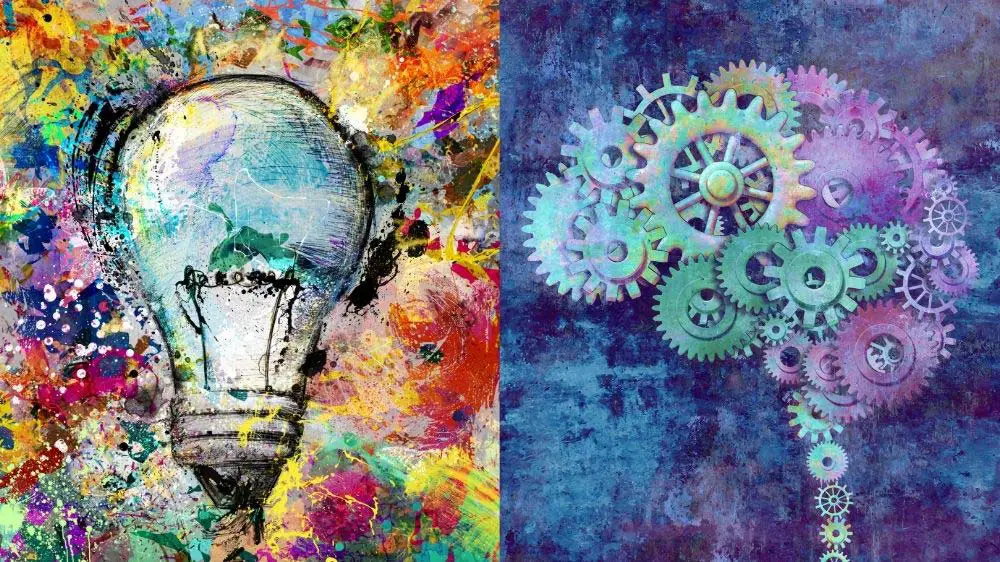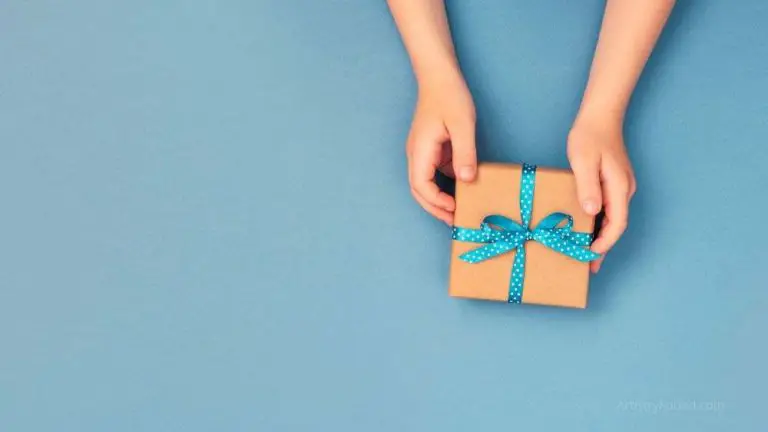How to be Creative in Art (10 Ways to Jump-Start Creativity)
Creativity is essential for creating great art, but high level creativity isn’t always on tap; most of the time, we need to wait for inspiration to strike before finding the motivation to complete a creative project. There are, however, some fun ways to spark inspiration when you’re running low on creative juice.
Deciding where to start is the most challenging part—each of the methods below has a few tips and tricks that will make it easier. Everyone’s creative process is different, so it’s essential to remember that you cannot force a creative breakthrough, but you can nudge it along. Here are ten ways to unleash your creativity.

(This article may contain affiliate links and I may earn a commission if you make a purchase)
1. Go Easy on Yourself—No One is Perfect
Let go of trying to be perfect. Perfection is an impossible goal to strive for, and it will always be just out of reach. Instead, embrace the imperfections in your creative work. The parts that you dislike may be what makes your work stand out. You might regret scrapping an entire project because it didn’t live up to your standards.
Practice this by sitting down and just getting to work. Don’t beat yourself down for making mistakes. We learn from our mistakes. Sometimes one wrong brushstroke can break a creative block and lead to something entirely different—and that’s not necessarily a bad thing. If you make a mistake, try to improvise instead of scrapping the entire project and starting anew.
2. Set Aside Time and Space for Projects
Everyone has a time or place where they find it easier to create. Whether you prefer painting at 2 am or when surrounded by other people, find what works for you and plan your creative output around it. Find a space that energizes you—if it’s a solitary space, fill it with things that inspire you. If you prefer company while you work, consider joining a workspace group.
If you want a quick burst of ideas, try working when you are tired. It might not seem ideal, but tiredness inspires artistic inspiration more often than not. You are less likely to veto ideas in this state—since your brain is too tired to focus as much on logic, it defaults to creativity. So, a little fatigue might be the trick you need to silence your inner critic.
3. Use Creative Prompts
Sometimes you have to go out and find ideas for your artwork—and it doesn’t always have to be work. Many people find it fun to turn their search into a challenge or a game. Try using a random creative idea generator specifically for artists. Find a prompt that you like and start drawing, painting, or doodling whatever comes up. You don’t have to stick to only one idea—the purpose is to get your creative mind working to spark a great idea.
If you’re looking for a fast-paced challenge, try your luck at completing Inktober. It’s a word-a-day prompt challenge for October. Originally intended to be only for ink-on-paper, other mediums are also welcome to the challenge. If you struggle to work on a flexible schedule, this challenge may help by offering you a daily deadline.
4. Take Good Care of Yourself
Creative projects are a stress reliever—but being a creative person can sometimes be emotionally taxing. Pouring all your emotion and energy into a project might leave you feeling drained. If you have a career in the arts, it can be easy to put everything else on the back burner while you work, including your physical health.
Remember to look after your well-being. We always hear about self-care, and most people assume that this is just being self-indulgent. Self-care is much more than that: it can mean recharging in periods of high stress through meditation, regular exercise, or yes—a long bath and a good night’s sleep. The main thing is clearing your mind and letting an original idea come to you instead.
For instance, I often have great ideas when I nap. At a point somewhere between sleeping and wakefulness, creative inspiration strikes, and provides me with an answer to a question or creative problem I’ve been thinking about.
5. Be Spontaneous—Shake Up Your Routine
Humans are creatures of habit, and everyone hates change. It might be terrifying to find out that a stagnant lifestyle could be the death of your creativity. Inspiration comes from reacting to the world around you, so familiar surroundings might not spark creativity as often as you’d like. Inspiration is a spontaneous occurrence, and it might get the creative idea generation going if we do something new and refreshing.
These changes can start small if you’re feeling hesitant. Take a walk after dinner or switch up the road you drive to work. Change the order of your routines—if you usually get coffee before your shower, shower before you get coffee. You can even try a new air freshener scent if you tend to stick to the same one. Anything to mix things up a bit, and jumpstart a creative mindset .
6. Dump Your Brain onto a Page
We have ideas at odd moments—right before bed or on the commute to work when we’re busy with errands. Unfortunately, you’ll probably forget this ‘a-ha!’ moment long before you have a chance to consider it seriously. Avoid this by keeping a journal on hand and taking note of those flighty ideas. Try to get your inspiration flowing with a brainstorm or mind map.
It doesn’t need to have a structure—brainstorming is just a rough outline of words, phrases, or doodles. The purpose is to remind yourself that there are no bad ideas. If you prefer having a method to the madness when planning, you could try mind mapping your process before you start. Writing things out helps you organize your ideas instead of rushing in blindly.
7. Change your Perspective
Art is biased—the thoughts and emotions of the artist influence its creation. When finished, interpretation is subjective to the thoughts and feelings of the viewer. What might help if you’re feeling stuck is to imagine things from a fresh perspective. A change of scenery or a creative thinking exercise can give you the fresh new point of view you’ve been needing. A novel idea may just appear!
J.P. Guilford developed what’s called the Alternative Uses exercise in 1967. It challenges you to pick any everyday object and develop other uses for it. No suggestion is wrong in this exercise—it’s a way for you to use your imagination and stretch your creative muscle to start seeing things differently, without changing everything around you.
Another way to do this is to change your surroundings, and visit a place you’ve never been before. Travel is a great way to change up the scenery, and stimulate divergent thinking. Travel in this case isn’t limited to big, faraway trips (although those are great too!), it can be as simple as traveling to the next town over, or exploring an area of your city that you’ve never visited before.
8. Do Menial Tasks
Modern living makes life easier, but it also made life fast-paced. We rarely do things the hard way, often taking the quick-and-easy route. There is some merit to taking the slow road—it has a meditative effect by clearing your mind and allowing a space for free-flowing thought. Clear your head while cleaning the house, and perhaps hit two birds with one stone.
Menial tasks are repetitive and require little to no focus. It might be washing or folding laundry, doing the dishes, sewing a button on a shirt, or ironing. If you like baking, you can even try making cookies or bread. Actions like mixing and kneading give the same comfortable rhythm with the added benefit of freshly baked goods 🙂
9. Look at Mediums Other Than Your Own
Creative professionals often utilize this method when looking for ideas. Watch a movie, read a novel or listen to music to get your creative juices flowing. Take note of how these works make you feel. Many people have found that specific works inspire them more than others—one particular song or novel that sparks their creativity immediately.
Challenge the media you consume. Visual art is a way to interpret or respond to the world around you. Ask yourself “what if”—what if the medium was different? What if somebody told the story from another perspective? Attempt to use another medium if you’re up for it. An illustrator could try to write a story. It might shed some light if you feel creatively backed into a corner.
10. Steal Like an Artist
Musicians often sample other songs, and writers use intertextuality to reference other writings. Artists are no exception—think of Sandro Botticelli, who depicted various scenes from classical mythology in his paintings. Surround yourself with interesting things and draw inspiration from them.
If you find a specific work that inspires you, try to imitate it. Imitation doesn’t mean blatantly plagiarizing it—we hone our creative skill through imitation and repetition. Ask yourself how you could replicate the art and show off your own unique style. If you’re feeling daring, combine works and play around with colors. Have fun with it and remind yourself why you love art in the first place.
Go Forth and Create!
Hopefully, you now have an idea of how to stimulate creativity. Maybe these techniques will be your go-to method in the future for getting your creativity flowing. If you’re feeling nervous to start, remember that everyone needs a little bit of a push sometimes. Forget about mistakes and doubts. Embrace the messes you might make along the way instead. Most importantly—have fun making your art!
More Creativity Articles to Enjoy:
References:







